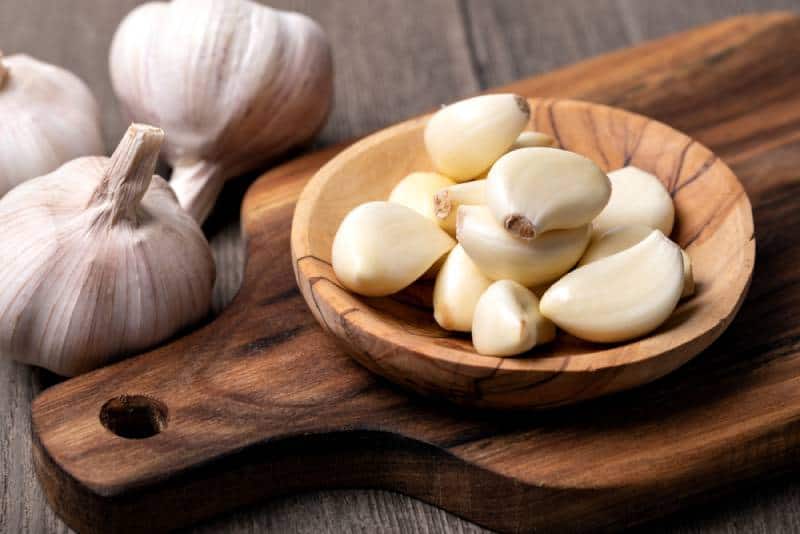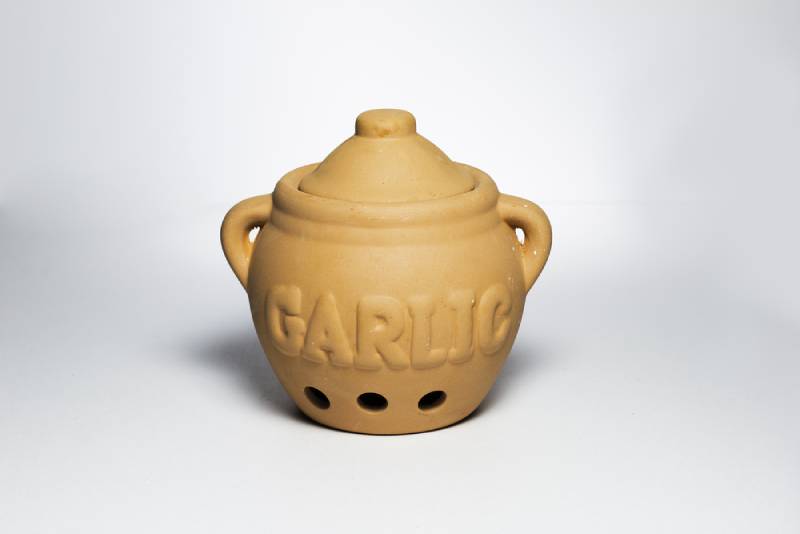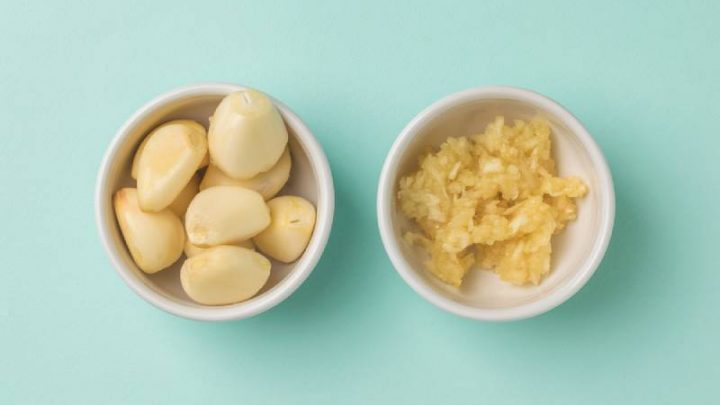Parents are always trying to find the best ways to introduce new tastes and flavors to spice up their baby’s diet. Some have even resorted to garlic, but can babies have garlic?
Surprisingly, the answer to the question: can babies have garlic? Is a yes. That said, your child might not end up liking it at first due to its potent flavor.
What’s also important to realize is that kids can only start eating garlic once they’re at least 6 months of age,or even after their 1st birthday, so their digestive system develops enough to handle different types of food.
It takes a little bit of time for your child’s tummy to develop, so what might be safe and tasty to us could cause a number of problems for him as it might be too much for his body to process.
Before you put garlic in your baby’s food, make sure to first consult with a pediatrics professional, your family doctor, or any other certified healthcare worker, to see whether or not your child is ready to start eating solid foods.
While garlic has many health benefits, there’s no real reason to rush as breast milk is still an excellent source of vitamins and nutrients, as is baby formula.
At the very least, you won’t have to worry about any food allergies from garlic as an allergic reaction to this delightful cooking ingredient is extremely rare.
So, When Can Babies Have Garlic?

As mentioned at the start of the article, the answer to the question: when can babies eat garlic? Is around 6 months old.
Your little one can start enjoying the wondrous flavor of garlic when he reaches at least 6 months of age, though some parents wait until up to 12 months so as to give the baby’s body time to develop and reduce any potential risks.
Even once 12 months has passed, you should still schedule an appointment with the doctor so they can perform a check-up and see whether or not your child is ready for new food to be added to his diet.
Even when your family doctor approves the addition of garlic to your baby’s solids, make sure to keep it in small quantities, as you might inadvertently cause a few negative side effects, like:
- Stomach cramps
- A bloated tummy
- Flatulence
- Vomiting
- Diarrhea
Luckily, garlic isn’t as bad as some of the other things you can add to your baby’s food, as its overconsumption doesn’t cause any particularly dangerous problems and its health benefits far outweigh the potential downsides.
The only real threat is not preparing the garlic cloves properly and leaving the pieces so big that they pose a choking hazard for the child.
The Health Benefits Of Garlic

Garlic is a true superfood, not just for adults, but babies too. For adults, the strong and iconic flavor is part of countless different dishes that are transformed from what would otherwise be somewhat bland food, into a treat for the taste buds.
It’s the same for children too, except it’s a stronger flavor than what your kid might be used to, which is why it’s recommended to use it in tiny amounts so it doesn’t overpower whatever dish you’re adding it to.
The best part is that it can go into basically any baby meal recipe without clashing with it, as long as the proper amount is used.
Garlic helps with many different conditions due to all of the amazing benefits that it has.
One of the most important benefits are the extremely helpful anti-oxidant properties that it has, which help reduce the damage of free radicals in our bodies, lowering the risk of cancer in the future as well as improving the immune system in general.
For this to be at its most effective though, you need to crush the garlic cloves, which is easy enough to do.
The other, rather odd benefit, which might be a bit specific, is that garlic helps fight off intestinal worms and is the best natural remedy for this condition.
Consuming garlic regularly also helps with the production of cytokine, and also strengthens some existing cells that help fight off diseases and illnesses like dendritic cells, lymphocytes, and eosinophils.
Garlic is also great for helping lower blood pressure and getting rid of the bad cholesterol in the blood, keeping your child healthy from the very beginning.
It’s also a favorite for many home remedies, including helping fight off the common cold, the flu, and other similar afflictions thanks to its powerful antibacterial and antimicrobial properties. My grandparents swear by it!
This is all thanks to the phytochemicals and the natural oils found within garlic, which help reduce the effects of many pesky ailments and keep your child healthier for longer.
Thanks to some of the nutrients found in garlic, like selenium, vitamin B6, iron, potassium, and manganese, this excellent member of the amaryllis family also possesses antiprotozoal and anti-fungal properties too.
Finally, it’s also a great addition to recipes and foods for baby led weaning, as it slowly tempts the baby away from breastfeeding and over to solid foods much easier thanks to the very distinct and ever-loved flavor profile of garlic.
While it may sound hard to believe, garlic is also a fantastic remedy for many of the common ailments that tend to plague little kids, and the proof is in the pudding, or in this case, its ingredient makeup.
Some of the best ingredient found in garlic are:
- Vitamin C, B6, and A
- Iron
- Sodium
- Potassium
- Calcium
- Cholesterol (the good kind)
- Selenium
- Manganese
How To Best Introduce Garlic Into A Child’s Diet?

The best way to get garlic into your child’s food is to separate the cloves and release the juices by crushing them, before mincing them up into small pieces so they won’t be a choking hazard for your little one.
When it’s his first time with garlic make sure to not overdo it, and only crush up one small garlic clove, or maybe even less just to test the waters.
He might not like it and spit it out, or he may even be one of the rare cases that’s allergic to the darn thing, and you definitely don’t want to overfeed him with it if that’s the case.
With that aside, the best way to mix it in is by adding it as a spice to some kind of puree, sweet potato works best, but you can experiment with others too.
A blender or steamer for baby food can be of great help while cooking with garlic as well.
A fresh batch of warm soup is also an ideal place to mix some garlic in, alongside some fresh herbs to add something unique to the soup’s flavor profile and make it more appealing to your child. Just make sure to not use too much.
You can also go for everyone’s favorite garlic-based product; garlic bread once your baby grows a bit older, as it’s bound to be something he’ll find tasty.
Proper Garlic Storage And Use

While the main question for new parents might be: can babies have garlic or not? The other question they should be asking is how to properly use, serve, and store it.
Much like with any other ingredient, preservation of its beneficial properties and its taste is key, and garlic is no exception.
If you’re careless, you’re likely to lose out on a quality product and you won’t get the full benefits from it.
The best way to get the most out of your garlic is to keep it in its raw form around the house. No pastes or powders, though powder can be useful if you’re in a hurry.
Generally, the easiest kind to find is white garlic, however black garlic can also be rather delicious, but is a bit harder to come by.
Outside of that, garlic is pretty easy to store as you can just have it hanging in a pantry, as long as it’s out of the way of your main cooking workstation, so it doesn’t soak up ambient flavors.
When it’s time to actually use it, simply peel the skin off and take the cloves out prior to cooking, then crush them with the flat end of a chopping knife before finely mincing them and then finally adding them to whatever you’re cooking.
This will help get all those juices out and make for a tastier dish.
I’ll remind you again to keep your doses minimal so your child doesn’t suffer any ill effects from the garlic itself, and also remember to mince it very finely so it doesn’t pose a choking hazard for your child.
In Conclusion
The clear answer to the question: can babies have garlic?
Is an easy yes thanks to the amazing number of beneficial properties this astounding vegetable has, that’s been the flavor savior of many foods that would otherwise end up bland.
It’s so popular that some adults almost eat garlic by the spoonful, but babies don’t have that luxury.
Despite it being a very tasty item to add to your child’s ever growing diet, it’s still vital that you seek proper medical advice before adding anything new to their diet.
Make sure that a qualified pediatrician gives you the green light first, especially at such a delicate time for your little one.
I’m sure you’ll know what to do when the time comes, though. Don’t miss out on expanding your child’s food palate to the tastiest stuff early on.
READ NEXT: Can Babies Eat Cucumber? Health Benefits And Risks
Like this post? Please share or pin it for later. You can also stay in the loop and follow us on Facebook, Instagram or Pinterest.

We love honesty! Find Your Mom Tribe is an Amazon Associate and we earn from qualifying purchases through affiliate links at no extra cost to you. Please see our full Amazon Affiliate disclosure for more information.

